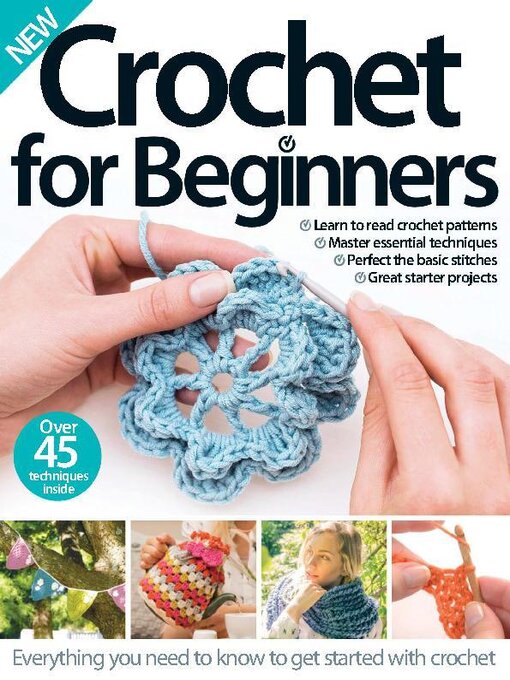Please type the description of the issue
Welcome to Crochet for Beginners
Yarns • From chunky wool to 4-ply acrylic, there is a wide variety of yarns with which you can crochet
Crochet hooks • As well as coming in a variety of different sizes, crochet hooks come in a range of styles, too. With a bit of practice, you’ll find the one that suits you
Crochet kit bag • Although just a hook and a ball of yarn will get you pretty far in crochet, many other helpful tools are available
Holding your hook and yarn • First things first: how to hold your hook and yarn. With practice you’ll find the method that’s most comfortable for you
Crochet for left-handers • If you’re left-handed and thinking that crochet isn’t for you, don’t give up just yet. There’s a very simple trick to make crocheting a little easier for you…
Tension (gauge) • When you’re working to exact measurements, it’s important to know how many stitches you need. Working out your tension will help with this
How to read a pattern • Most crochet projects are made by following a pattern. Although they may look daunting at first, they’re easy to read once you understand the terms
UK/US terminology • Always make sure you check whether a crochet pattern uses US or UK crochet terms – or you’ll find yourself very confused
Making a slipknot • This easy knot is the place to start when making most crocheted items that are worked in rows
Making a yarn over • This is the single most basic step in creating crochet stitches, and a technique that’s important to master before moving on
Drawing up a loop • Everything you crochet will be formed by creating loop after loop and joining them together in different ways. Learn how to create those loops here
Making a foundation chain • When working in rows to make a piece of flat crocheted fabric, you will need to create a foundation chain to work your first row of stitches into
Working the chain • Now you’ve made your foundation chain, it’s time to get going on your project by creating your first row of stitches into the chain
Working into subsequent rows • When you’ve completed your first row, the only way is up. The next step is to build on the row you’ve just worked
Double crochet • The easiest crochet stitch creates short and compact stitches
Treble crochet • This stitch is twice the size of the single crochet, and worked in a very similar way
Half treble crochet • A less common stitch that is taller than double crochet but not quite as tall as treble crochet
Double treble crochet • This common stitch is much taller than the treble crochet, and this size allows it to be worked into a piece of fabric fairly quickly
Turning chains • At the end of every row, you need to move your hook up to the height of the stitches you are about to create. This is done using a turning chain
Slip stitch • While rarely used on its own to create a pattern, this versatile stitch is really handy for joining stitches and moving the position of the hook and yarn without adding height
Identifying and counting stitches • All crocheted fabric is made up of different kinds of stitches, but learning what those stitches look like on their own is essential to creating your own work
Fixing mistakes • A benefit of crochet is how easy it is to undo mistakes – all you have to do is unravel to the point where you messed up, then make it right!
Fastening off • When you’ve finished a project, prevent it from unravelling by fastening off
Basic edging • When you’ve finished working a flat piece, a simple border made of double crochets will help straighten the sides and give a neat finish
Weaving in ends • There are several...

